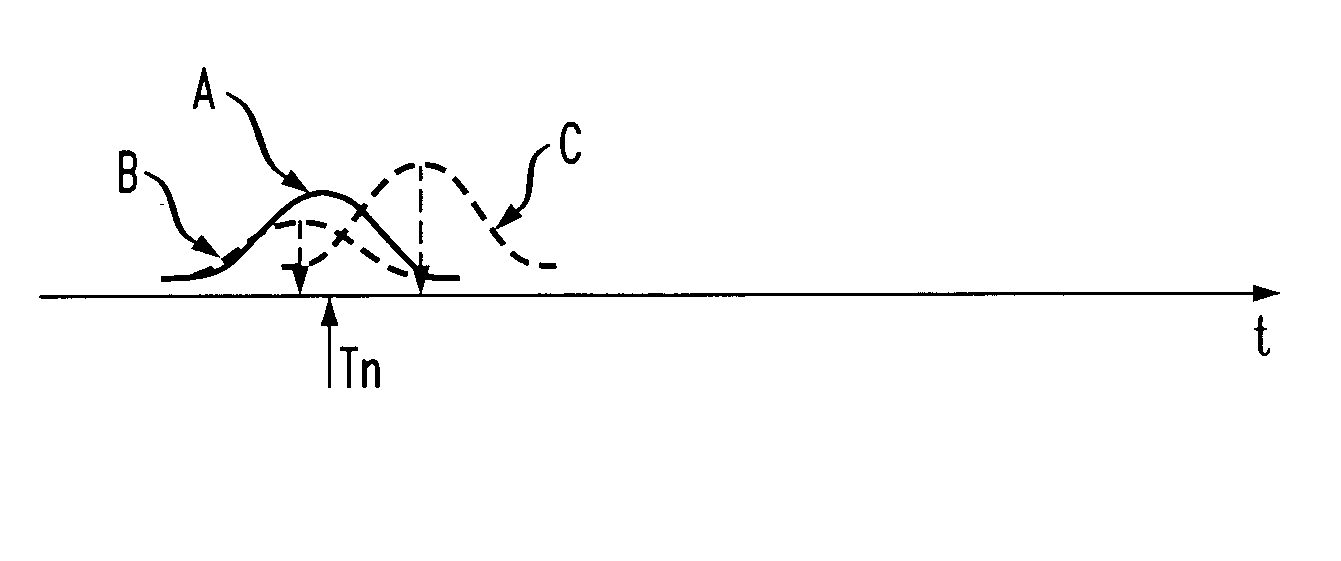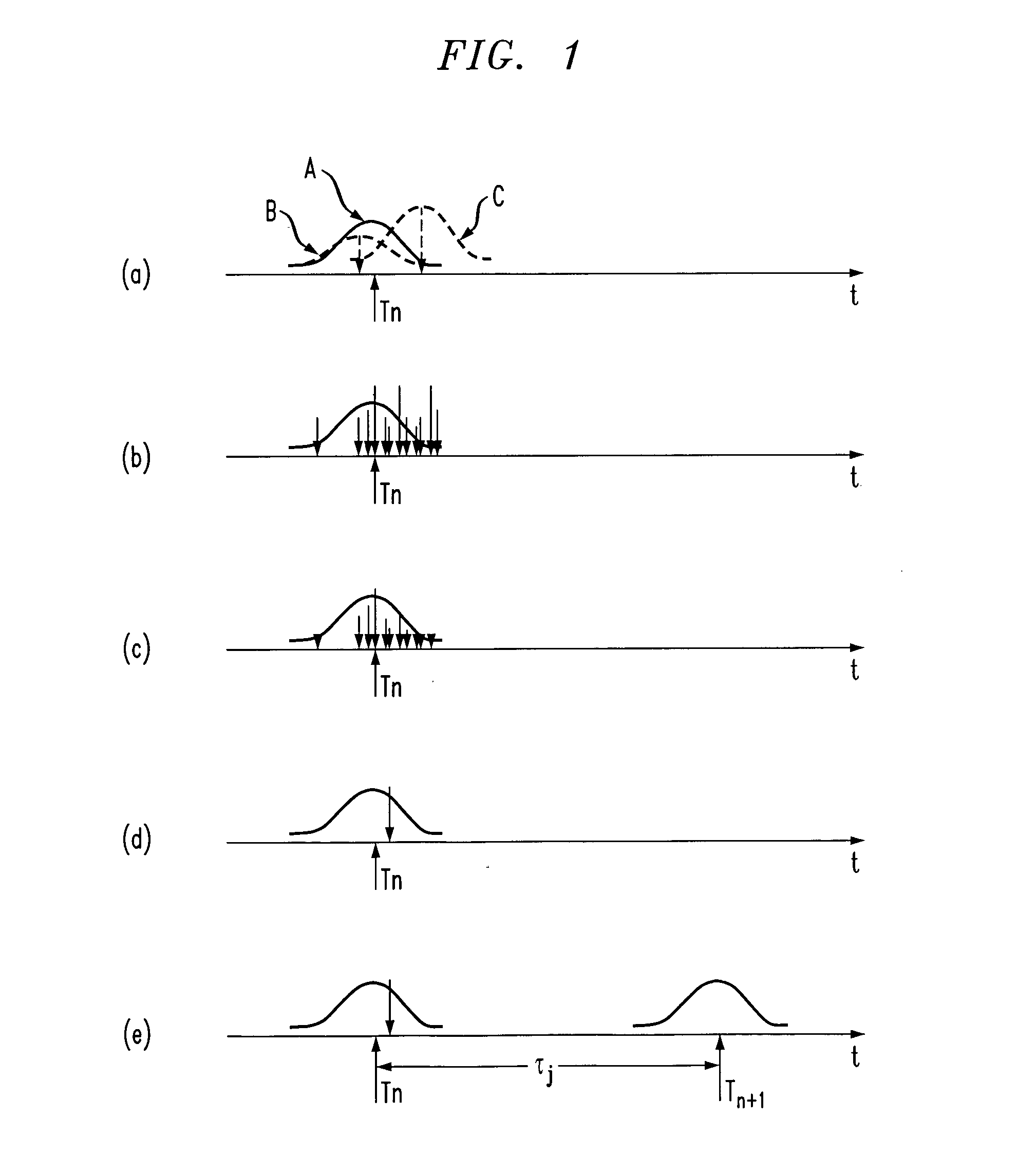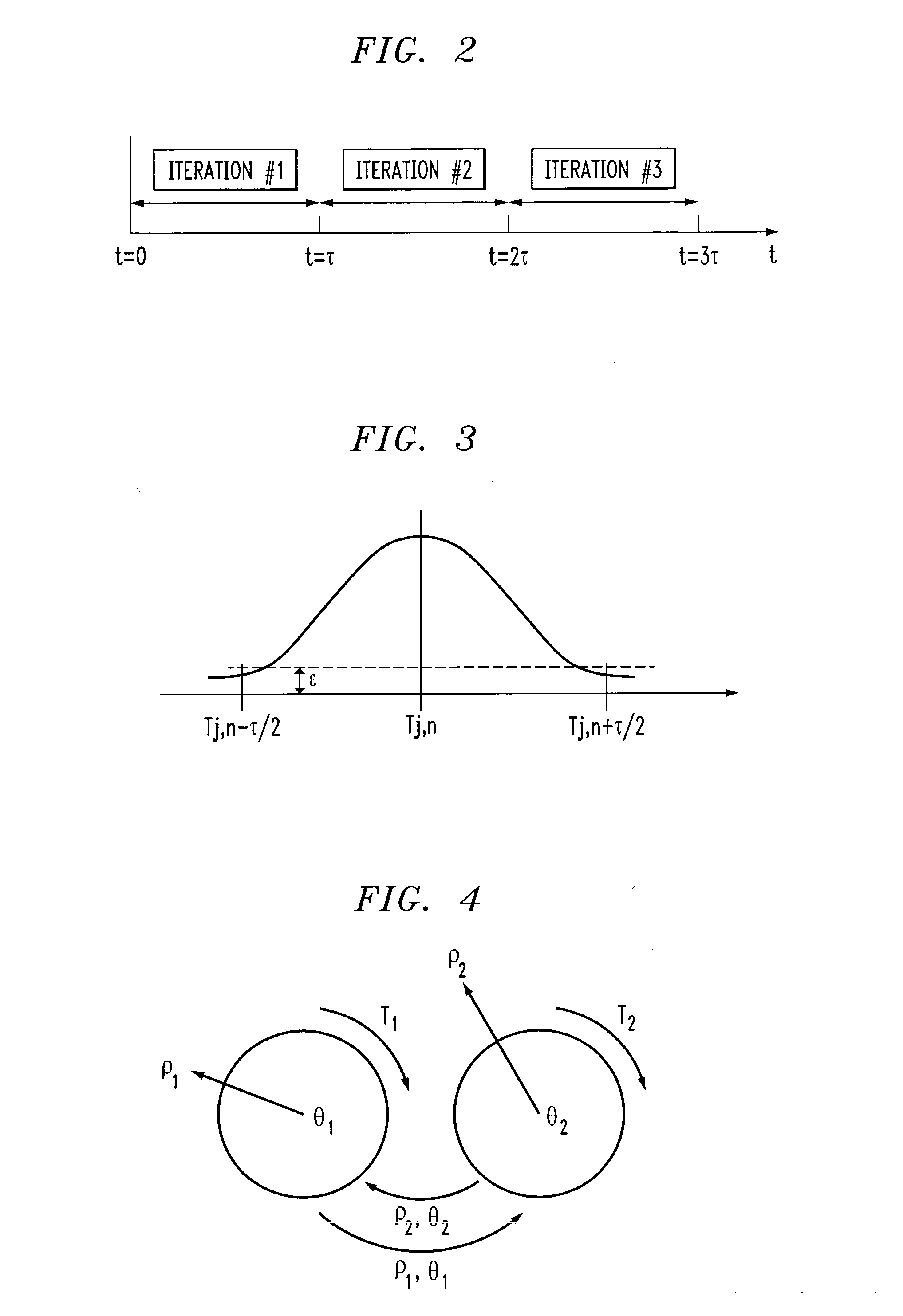Methods and apparatus for transmitting signals through network elements for classification
- Summary
- Abstract
- Description
- Claims
- Application Information
AI Technical Summary
Benefits of technology
Problems solved by technology
Method used
Image
Examples
first embodiment
[0058] In the classifier element, timing information of signals processed by the element is modeled mathematically as follows. The output of a classifier element is denoted by Sj(t), where j is an index indicating the specific element. It is assumed that Sj (t) is constructed from two classes of waveforms. One is pulsatile and nearly periodic, and the other is nearly constant within the period of the pulsatile waveform. The underlying reason for modeling the signals in this way is that the model is intended to represent the aggregate behavior of a collection of neurons, and the effect this collection has on another collection of neurons. Though the preferred embodiment is described with reference to these two classes of waveforms, the analysis technique can be extended to multiple classes of waveforms in the spirit of this invention.
[0059] When Sj (t) is represented as a nearly constant value, the amplitude of the signal will be interpreted as the functional value of the classifier ...
second embodiment
[0071] In the classifier element, the amplitude and phase of an oscillator are used to implement the FM values. Thus, interactions between elements are not represented in terms of signal timing, but in terms of the phase of the signals, which in contrast with the previous embodiment are constantly compared and updated. Each FM element is an oscillator with the following variables: [0072] Phase: θ(t) ε [0,2π) [0073] Frequency: τ(t) [0074] Natural Frequency: τ0 ε [τmin, τmax][0075] Amplitude: ρ(t) ε [0,1]
The amplitude ρ can be considered to be the functional value of the classification. The phase θ of the classifier element is considered to be its membership value. The relationship between the phase of the input element and that of the receiving element plays a role in the computation of the output as follows.
[0076] Referring now to FIG. 4, a diagram illustrates a first classifier element interacting with a second classifier element. Classifier elements interact with each other by c...
third embodiment
[0085] In the classification element, a model that does not require the comparison of the incoming membership value with the receiving element's own membership value is used. The method operates as follows: [0086] An input layer consisting of receptors measures some property of the input. [0087] A layer (layer a) of integrate-and-fire model neurons receives inputs from the receptor layer, whose membrane potentials, in absence of other classes of inputs, are described by:
Via(t)=−gVia(t)+κIi(t)+εi(t) [0088] where g is a leakage term, Ii is the corresponding receptor input value, κ is a proportionality factor (usually the inverse of the capacitance), and εi is a stochastic process with zero temporal average. When the membrane potential reaches a specified threshold, the neuron fires a spike and its membrane potential is reset to its resting value, so that if Via(t)≧Vthsia(t)=1,Via(t)=VR otherwise sia(t)=1. [0089] A layer (layer b) of integrate-and-fire model neurons receives spiking in...
PUM
 Login to View More
Login to View More Abstract
Description
Claims
Application Information
 Login to View More
Login to View More - R&D
- Intellectual Property
- Life Sciences
- Materials
- Tech Scout
- Unparalleled Data Quality
- Higher Quality Content
- 60% Fewer Hallucinations
Browse by: Latest US Patents, China's latest patents, Technical Efficacy Thesaurus, Application Domain, Technology Topic, Popular Technical Reports.
© 2025 PatSnap. All rights reserved.Legal|Privacy policy|Modern Slavery Act Transparency Statement|Sitemap|About US| Contact US: help@patsnap.com



